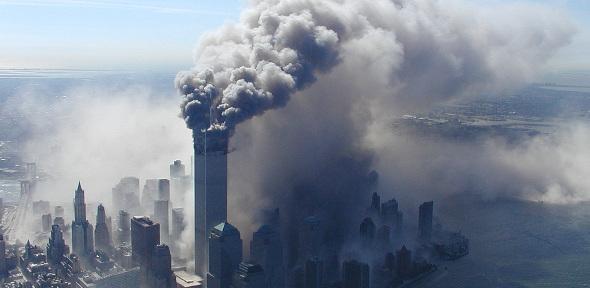
A new mathematical analysis of the collapse of the World Trade Centre has been published by a Cambridge University academic, with results that challenge conspiracy theories surrounding the September 11th attacks.
In all senses, the collapse sequence was quite ordinary and natural.
Dr Keith Seffen
The new paper, by Dr Keith Seffen, uses established engineering models to demonstrate that once the collapse of the twin towers began, it was destined to be rapid and total.
Although the causes that initiated the collapse of the twin towers are now well understood, engineers continue to speculate about the speed and totality with which the buildings were demolished during the fateful attacks.
Some have even dared to suggest that the catastrophic events that followed two planes being flown into the buildings were the result of a conspiracy that extended to the top of government itself.
Dr Seffen, a Senior Lecturer in the Structures Group in the Department of Engineering, was moved to find a scientific explanation for the collapse when he heard about reports of possible insider involvement. Claims of "controlled demolition" were being suggested, in order to explain the speed, uniformity and similarity between the collapses of both towers.
"I thought immediately that there had to be a rational explanation for why collapse happened as it did, one which draws on engineering principles," he said. "After searching the current literature, it became clear that many studies focused on the phase just before collapse settles in.
"They rightly show that the combination of fire and impact damage severely impaired those parts of the building close to where the aircraft hit to hold the weight of the building above. The top parts were bound to fall down, but it was not clear why the undamaged building should have offered little resistance to these falling parts."
Dr Seffen's new analysis, which will be published in a forthcoming issue of the American Society of Civil Engineers' Journal of Engineering Mechanics, focuses on calculating the residual capacity of the building to resist the weight of the floors above under collapse conditions.
He then develops a dynamic model of the collapse sequence, which simulates the successive squashing, or "pan-caking" of individual storeys based on the residual capacity already identified. The process is already well known from other studies of progressive collapse, but usually applies to other structures such as undersea pipelines, rather than buildings.
This allowed Dr Seffen to predict that the residual capacity of both buildings was limited, and once collapse had started, it would take only 10 seconds for the building to go down - just a little longer than the free-falling of a coin dropped from the top of either tower.
"The aim was to produce a credible scientific explanation for the totality of collapse once it began," he said.
"In all senses, the collapse sequence was quite ordinary and natural. The World Trade Centre towers were designed to absorb an aircraft impact, but an accidental one with much less fuel and speed. It is widely acknowledged that the impacts on September 11th were extraordinary, which led to consequences well in excess of the design capacity for the buildings. The original design of both towers must be praised for standing as long as they did, saving more lives than might have been expected."

